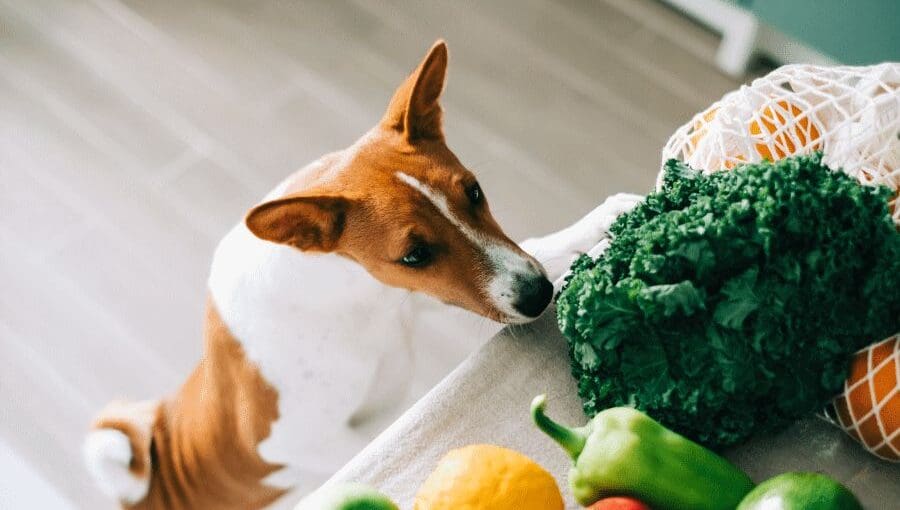
There comes a point in every dog’s life when the first signs of ageing begin to appear. This can manifest itself, for example, in reduced energy requirements, a deterioration of the senses of sight, smell and hearing or a greying of the coat. For the dog owner, this is also a signal that it is time to change from a diet dedicated to adult dogs to one for seniors. How do you feed an older dog and what should you pay special attention to?
When is it known that your dog is already a senior?
Usually, a pet becomes a senior citizen when it has lived an average of 70-80% of its life. Of course, every dog owner believes that their pet will live as long as possible – and this is very good thinking! It is worth bearing in mind that, thanks to advances in veterinary science and ever better care – the life expectancy of dogs is increasing all the time. However, it is good to know when, more or less, an adult dog turns into a senior dog so that you can take even better care of it.
The point at which a dog can be called ‘senior’ varies according to the breed and size of the dog. Rather, it is no stranger to the fact that small dogs live the longest. It is accepted that a dog is considered small if it weighs less than 9 kg. Small dogs enter the senior category at around 12 years of age (+/- 2 years). Medium dogs, i.e. those weighing between 9 and 22.5 kg, become seniors at around the age of 10 years (+/- 1.5 years). Large dogs, i.e. those weighing roughly between 22.5 and 40 kg, reach senior age at approximately 9 years (+/- 1.5 years). Unfortunately, dogs considered to be giant, i.e. weighing more than 40 kg, live the shortest lives and become seniors at approximately 7.5 years (+/- 1.5 years).
Of course, the above age ranges are approximate and not necessarily true for every dog. However, it is worth familiarising yourself with them so that you know when it is time to pay special attention to your dog and when to look out for the first signs of ageing. For the owner, this will also be a signal that it is time to change your dog’s diet.
How do you feed an older dog?
If you are the owner of a four-legged dog, no matter how old it is, it is a good idea for you to already be familiar with some tips on how to properly feed an older dog.
Less exercise and changes in metabolism = risk of being overweight
The older a dog gets, the less exercise it needs. When a dog becomes a senior citizen, he is no longer as keen to play and run around all the time and values peace and quiet and rest more. What’s more, his body undergoes significant changes, including a drop in metabolic rate, making it easier for unwanted body fat to build up. As body fat increases, muscle mass decreases. All these factors mean that a senior dog has a lower daily energy requirement and should therefore receive around 20-30% fewer calories than an adult dog. In such cases, it is advisable to reach for senior dog food, such as wet food with veal, carrots and thyme, which has a reduced fat content and is easy to digest. Of course, it is a good idea to keep an eye on your dog so that you know how much his physical activity level has changed. In some healthy and older dogs, physical activity levels remain high all the time – in this situation, your dog’s food intake should not be significantly reduced.
Feed less, but more often
In an older dog, as in humans, the metabolic rate, or metabolism, changes with age. The senior dog digests food much more slowly than an adult dog. It also has a smaller appetite. This is why a large amount of food given at once can create problems such as overloading the digestive tract, resulting in poorer digestion and less absorption of nutrients. It is, therefore, a good idea to feed your dog smaller portions, but feed them slightly more frequently – a minimum of three times a day.
Wet or dry food?
Senior dogs are much more likely to have dental problems than adult dogs. These can include conditions such as a large amount of tartar, various types of inflammation or even missing teeth. All of this should raise the question for pet owners – isn’t it better to switch from dry food to wet dog food? This way, your dog will not feel pain when eating and will be happy to eat a meal, such as one from a can of wet rabbit dog food, which has been developed according to modern pet nutrition recommendations.
The right amount of vitamins and minerals
Adequate vitamins and minerals are very important in the diet of any older dog. As in humans, it is important to take vitamin D, which takes care of bone tissue, and phosphorus, which takes care of proper kidney function. Vitamin C, which is beneficial for brain function, is also very important. A senior dog’s diet should also not lack elements such as zinc, copper and manganese, which contribute to the overall proper functioning of the body. Many people wonder whether it is worth giving their dog extra vitamins in tablets. The answer is simple – it depends on the quality of the food your dog is given. When it comes to wet food – all the necessary ingredients can be found in senior dog food with lamb, for example. In large-breed dogs, especially when they are older, it is a good idea to add supplements with glucosamine and chondroitin to the diet to reduce the risk of joint disease. It is also a good idea to give supplements with omega-3 fatty acids, such as salmon oil. As well as supporting the osteoarticular system, they also support proper brain function.
Water is an important ingredient in the diet
Older dogs are particularly prone to dehydration. This is related to the fact that they have a reduced appetite and drink much less water. It is also linked to a decrease in muscle mass and an increase in body fat. This is why every pet owner should keep a close eye on their dog to know how many litres of water they are drinking per day. If it is a large amount less than before, it is worth encouraging your dog to drink, for example, through praise or frequent changes of water to fresh water.
Nutrition of older dogs – summary
As you can see, nutrition is of great importance for slightly older dogs. It allows them to remain not only fit but also well – and after all, everyone wants their pooch to stay in good shape for as long as possible. So try to give your dog the best possible quality senior dog food, rich in valuable minerals and vitamins. And don’t forget about daily exercise – this will keep not only your dog but you too, in good shape!






